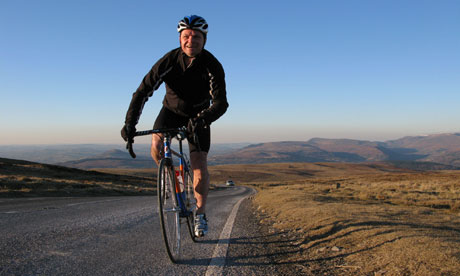
"Every time you spend money," wrote American ethicist Anna Lappé, "you're casting a vote for the kind of world you want." I think about this statement quite regularly, sometimes when I walk past Pret a Manger, in search of a less soul-destroying lunchtime sandwich, but most often when I ride to and from work.
About a decade ago, when I thought of bicycles as no more than a time-saving mode of transport, I bought a hybrid made by a behemoth American manufacturer. It looked all right, it fitted my budget, I rode it round the block once and took it home. I did not care where the frame was made (Taiwan) or have any interest in any of the components, beyond being childishly impressed by the fact it had 27 gears (25 of which remain sadly neglected).
It did not take me long to realise that my £500 had cast a vote for, if not Nick Griffin, then certainly Robert Kilroy-Silk. The bike was not particularly well made: there were recurring problems with the wheels and, after a few years, the aluminium frame actually snapped (it was replaced, under guarantee, by the behemoth). But mostly, as my interest in cycling increased, I was distressed by the hybrid's utter lack of personality, its unashamed generic-ness. At the end of each day, my heart sinks slightly when I return to the lamppost and see it has not been stolen.
On the evidence of his new book, It's All About the Bike, Robert Penn is likely to sympathise with my predicament. He has ridden bikes for 36 years and has owned everything from a Raleigh Tomahawk to a bespoke tourer that he cycled for three years and 40,000km round the world in the mid-1990s. He currently has five bikes – or "steeds" in his argot – but this book follows his quest to build one dream machine "to grow old with". As he writes early on: "Anyone who rides a bike regularly and has even the faintest feeling of respect or affection for their own steed will know this hankering – I want my bike."
Penn, a natural-born enthusiast, starts the process with a tour of Britain's artisan frame-builders. Considering the battering they must have endured, it is something of a miracle that any of these operations remain. Penn, however, paints a portrait of time-warped perfectionists, drinking endless mugs of tea while using skills and craftsmanship that remain unsurpassed anywhere in the world.
But Penn is not simply a nostalgist; what he really rails against is the idea of built-in obsolescence, and the accepted truth that new technologies automatically trump old ones. In the end, he eschews the lightweight dynamism of carbon fibre for a steel frame made by Brian Rourke Cycles in Stoke-on-Trent because it will be strong, easy to repair and just as dependable 30 years from now.
From here, Penn's odyssey takes him around the world to kit out his bike with the perfect components. These are not necessarily the most expensive ones, but let's just say that he doesn't nip into Halfords at any stage. Some names will be familiar to enthusiasts (Campagnolo, Cino Cinelli, Brooks), others may not be (wheelman Steve "Gravy" Gravenites of California). It is not exactly a low-carbon exercise, but Penn reminds us that he will make amends by riding his dream creation every day for the next three decades.
While It's All About the Bike lacks an obvious cliffhanger ending, – the biggest nail-biter is what colour Penn paints the frame – it is particularly strong on the history of cycling, placing Penn's bike within the context of the draisines, dandy horses, boneshakers and widow-makers that have gone before. The pages overflow with pioneers, mavericks and geniuses – certainly, it is hard to imagine anyone who reads this book being able to buy a bike "off the peg" again. It will inevitably appeal most to those with an existing interest, but as a depiction of a world you might vote for, Penn's does not sound bad at all.

